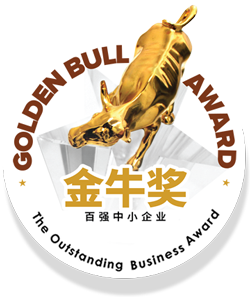To improve SEO for a Skylift website design, you can follow several strategies to ensure better rankings on Google and other search engines. Here are key recommendations:
1. Keyword Research and Optimization
- Identify Key Keywords: Focus on relevant keywords for the skylift industry, such as "skylift rental," "aerial lift services," "boom lift hire," "high access equipment," and any location-based keywords (e.g., "skylift rental in Kuala Lumpur").
- On-Page SEO: Use your main keywords strategically in:
- Title Tags: "Affordable Skylift Rental Services in [Location]"
- Meta Descriptions: "Professional skylift rental and aerial lift services for construction, maintenance, and high-access work."
- Headings (H1, H2): Structure pages with clear headings. For example, use "Skylift Services" as H1 and break down the services using H2, such as "Boom Lift Rentals," "Scissor Lift Services."
- Image Alt Text: Optimize images by using descriptive keywords. For example, "skylift equipment for high access work."
2. Create Content Targeting Customer Needs
- Blog Content: Write articles about skylift uses, safety tips, how-to guides for equipment, and advantages of using skylifts over scaffolding. Example topics:
- "Top 5 Reasons to Rent a Skylift for Your Construction Project"
- "Safety Tips for Operating Skylifts and Aerial Lifts"
- Service Pages: Create specific pages for each type of skylift service (boom lifts, scissor lifts, etc.) with detailed descriptions.
- Case Studies: Showcase successful projects using skylifts in various industries (e.g., construction, maintenance, film production) to build authority.
3. Optimize for Local SEO
- Google My Business: Make sure you have an optimized Google My Business profile, listing your skylift rental services with accurate contact details, location, and business hours.
- Location-Based Keywords: Incorporate keywords for your target regions (e.g., “skylift rental in Selangor” or “high access equipment in Penang”) into your website’s content.
- Local Landing Pages: Create individual pages for each location where you offer skylift services, with localized content. Include maps, directions, and customer testimonials from that specific area.
4. Technical SEO Enhancements
- Mobile Optimization: Ensure the website is fully responsive on mobile devices, as a significant portion of users may search for your services from their phones.
- Fast Loading Speed: Optimize images, scripts, and use caching to improve page load times, as Google prioritizes fast-loading sites in search rankings.
- SSL Certificate: Ensure your website is secure (HTTPS) as it’s a ranking factor.
- Schema Markup: Use schema for "Local Business" and "Service" types, so Google can better understand your site structure.
5. Internal Linking and URL Structure
- Internal Links: Use internal linking to connect your service pages, blog posts, and other key pages. This helps distribute page authority and improves SEO.
- Clean URL Structure: Use SEO-friendly URLs, like “example.com/skylift-rental-services” or “example.com/skylift-safety-tips.”
6. Create Engaging Visual Content
- Videos: Create instructional videos showcasing skylift operations, safety instructions, or customer testimonials. Host these videos on YouTube and embed them on your site. Optimize video titles and descriptions with relevant keywords.
- Infographics: Design infographics that explain the different types of skylifts or their safety features. Visual content tends to perform well in SEO.
7. Gather Customer Reviews and Testimonials
- Testimonial Pages: Create a page dedicated to customer testimonials or case studies. Positive reviews can build trust and improve SEO.
- Encourage Google Reviews: Ask satisfied customers to leave Google reviews. These can help improve your local search ranking.
8. Backlink Building
- Guest Posts: Write guest articles for industry blogs, construction websites, or local directories and include backlinks to your skylift website.
- Business Partnerships: Collaborate with companies in construction or maintenance industries to exchange backlinks.
9. Regular Updates and Fresh Content
- Regularly update your blog with relevant, fresh content about skylift technology, safety practices, and industry trends. Search engines prioritize websites that consistently publish new content.
By following these steps, you can improve the SEO for your skylift website, making it more visible and attractive to potential customers searching for skylift rental and aerial lift services online.
Inquiry - Website Design - Skylift






















